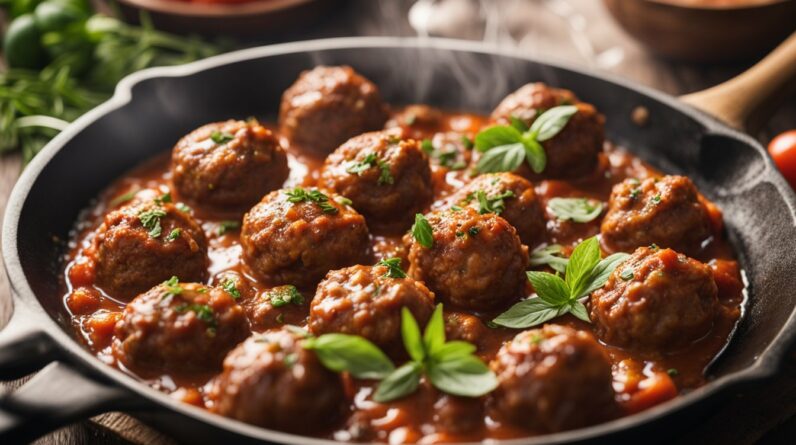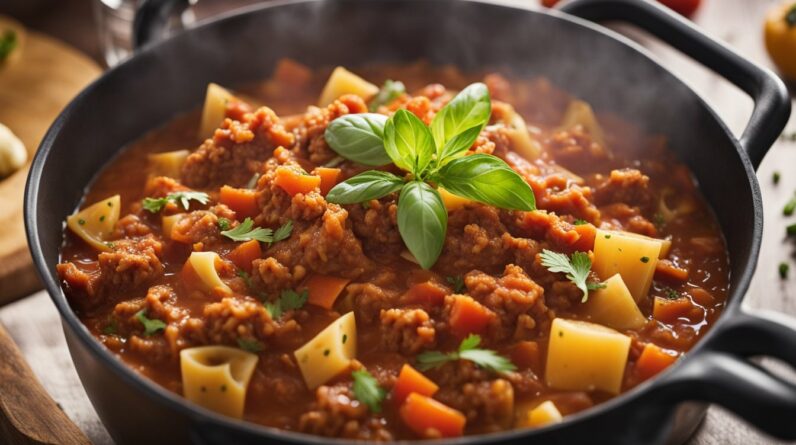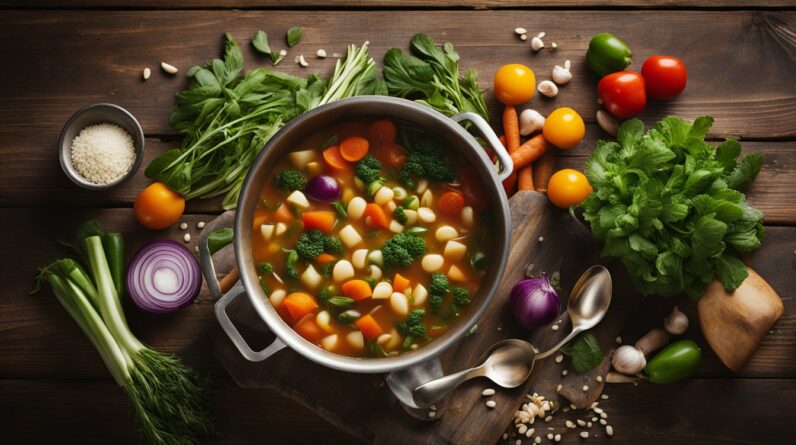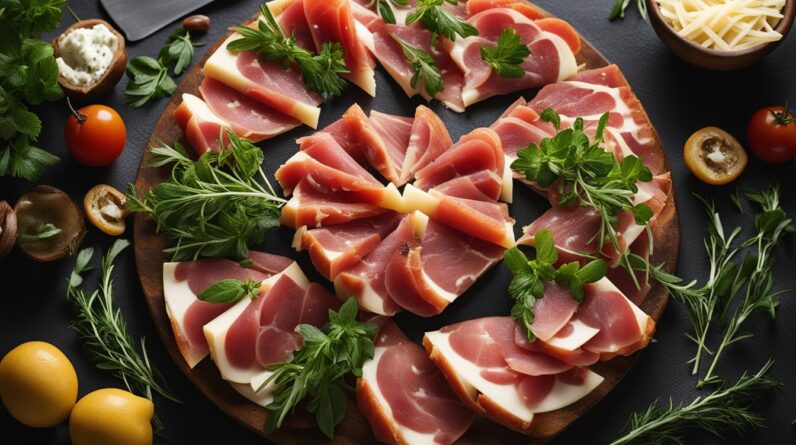In the delightful world of Italian cuisine, the pairing of cheeses with wines and fruits is an art that tantalizes the taste buds and awakens our palate to new and exciting flavors. As food enthusiasts, we find ourselves captivated by the intricate dance of flavors that takes place when the buttery richness of a Parmigiano-Reggiano meets the velvety smoothness of a Chianti. With each bite, we discover a harmonious balance of textures and tastes that leaves us craving for more. So, are you ready to embark on a culinary adventure and unlock the secrets of pairing Italian cheeses with wines and fruits? Let’s journey together into the world of exquisite combinations and discover the beautiful tapestry of flavors that awaits!

Understanding Italian Cheeses
Italian cheeses are renowned for their rich flavors and diverse textures. From the creamy goodness of Mozzarella to the savory bite of Parmigiano Reggiano, there is a cheese to satisfy every palate. Understanding the different types and characteristics of Italian cheeses is essential for creating harmonious pairings that elevate both the cheese and the accompanying wine or fruit.
Types of Italian cheeses
Italy boasts a vast array of cheeses, each hailing from different regions and made using unique techniques. Some of the most popular Italian cheeses include Parmigiano Reggiano, Mozzarella, Gorgonzola, and Pecorino Toscano. Parmigiano Reggiano, known as the “King of Cheeses,” is a hard and granular cheese with a rich and nutty flavor. Mozzarella is a soft cheese with a delicate taste and a creamy texture. Gorgonzola is a blue cheese with a strong, tangy flavor, while Pecorino Toscano is a sheep’s milk cheese with a sharp and salty taste.
Characteristics of Italian cheeses
Italian cheeses exhibit a wide range of flavors, textures, and aromas. Some are creamy and delicate, while others are assertive and robust. The aging process also plays a significant role in determining the characteristics of the cheese. Young cheeses tend to be milder, while aged cheeses develop a more complex and intense flavor. Italian cheeses can be classified into different categories such as fresh, semi-soft, hard, and blue, allowing for varied pairing options with wines and fruits.
Key factors for pairing Italian cheeses
When pairing Italian cheeses, it is important to consider the specific characteristics of both the cheese and the companion. Three key factors to consider are flavor profiles, intensity levels, and regional pairings. Cheeses with similar flavor profiles often complement each other, while contrasting flavors can create interesting and exciting pairings. Furthermore, the intensity of the cheese should be matched with the intensity of the wine or fruit to achieve a harmonious balance. Lastly, exploring regional pairings can provide a deeper understanding of the traditional combinations that have stood the test of time.
Exploring Wine Pairings
Wine and cheese have long been considered the perfect companions, and Italy’s rich wine culture offers a plethora of options to pair with its cheeses. To create a successful wine and Italian cheese pairing, it is crucial to understand the flavors and characteristics of different wines.
Understanding wine flavors
Wines can range from light and crisp to full-bodied and robust, each with its own unique flavor profile. White wines often exhibit citrus and floral notes, while red wines tend to showcase flavors of red and black fruits, spices, and earthy undertones. Sparkling wines bring a refreshing effervescence and a touch of acidity, while fortified wines offer richness and sweetness. Understanding these flavor profiles is essential for finding the perfect wine to complement the flavors of Italian cheeses.
Pairing principles
When it comes to pairing wine with Italian cheeses, there are several principles to keep in mind. First and foremost, aim to achieve a balance between the flavors of the cheese and the wine. Complementary pairings enhance and accentuate the flavors of both components, while contrasting pairings create a harmonious interplay of flavors. Additionally, consider the intensity levels of both the cheese and the wine. Lighter cheeses pair well with lighter wines, while bolder cheeses can stand up to more robust wines.
Red wine and Italian cheese pairing
Red wines are known for their rich flavors and ability to stand up to bold and aged cheeses. Pairing a robust red wine, such as an Amarone or a Barolo, with a cheese like Gorgonzola creates a beautiful marriage of intense flavors. The rich and complex notes of the red wine complement the tangy and creamy characteristics of the cheese, resulting in a luxurious and indulgent pairing. Other red wines like Chianti and Sangiovese can also be paired with Italian cheeses such as Pecorino Toscano or Parmigiano Reggiano.
White wine and Italian cheese pairing
White wines offer a refreshing and crisp counterpart to the creamy and delicate flavors of many Italian cheeses. A Chardonnay or a Pinot Grigio pairs well with fresh cheeses like Mozzarella, as their citrusy and floral undertones complement the mild and creamy texture of the cheese. Additionally, a Sauvignon Blanc or a Vermentino provides a zesty and vibrant pairing for cheeses like Pecorino Romano or Ricotta. The acidity in the white wine cuts through the richness of the cheese, creating a perfect harmony.
Sparkling wine and Italian cheese pairing
The effervescence of sparkling wines adds a celebratory touch to any cheese pairing. Prosecco, with its delicate bubbles and fruity notes, pairs wonderfully with fresh and creamy cheeses like Mozzarella or Burrata. The light and refreshing nature of Prosecco beautifully balances the richness of the cheese, creating a delightful contrast. For those seeking a more elegant pairing, a Franciacorta or a Trento DOC can be paired with aged Parmigiano Reggiano or Grana Padano, allowing the nutty flavors of the cheese to mingle with the toasty notes of the sparkling wine.
Fortified wine and Italian cheese pairing
Fortified wines, such as Marsala or Vin Santo, bring richness and sweetness to cheese pairings. Their intense flavors and higher alcohol content make them a perfect match for aged and bold Italian cheeses. The caramel and dried fruit notes in fortified wines complement the nutty and savory flavors of cheeses like Pecorino Vecchio or Asiago. Moreover, the sweetness of the fortified wine provides a delightful contrast to the salty and aged characteristics of the cheese, creating a truly decadent pairing experience.
Selecting Fruit Companions
Pairing Italian cheeses with fruits is a delightful way to balance flavors and add a touch of freshness to the palate. When selecting fruits to accompany Italian cheeses, consider factors such as complementary flavors, texture pairing, and the balance between sweet and tangy flavors.
Complementary flavors
Pairing fruits that have complementary flavors to Italian cheeses can enhance the overall taste experience. For example, the juicy sweetness of ripe figs complements the nutty and salty flavors of Parmigiano Reggiano, creating a harmonious and satisfying combination. Similarly, the subtle sweetness of pears pairs well with the intense and slightly spicy taste of Gorgonzola. By considering the flavor profiles of both the cheese and the fruit, you can create a pairing that elevates the taste of both components.
Texture pairing
Texture also plays a significant role in fruit and cheese pairings. Combining fruits with different textures can add interest and complexity to the overall experience. For example, the soft and creamy texture of Mozzarella can be enhanced by pairing it with the crisp and juicy texture of melon. The contrast between the smooth cheese and the refreshing fruit creates a delightful combination of flavors and textures. Similarly, the firm and grainy texture of Parmigiano Reggiano complements the juicy and crunchy texture of grapes, creating a satisfying textural experience.
Sweet vs. tangy fruits
Finding the right balance between sweet and tangy flavors is essential when pairing fruits with Italian cheeses. Sweet fruits, such as grapes or figs, can provide a pleasant contrast to the savory and salty characteristics of cheeses like Pecorino Toscano or Parmigiano Reggiano. On the other hand, tangy fruits, such as apples or citrus fruits, can add a touch of acidity that cuts through the richness of creamy cheeses like Gorgonzola or Taleggio. Experimenting with different combinations of sweet and tangy fruits can lead to delightful and unexpected flavor experiences.
Common fruit pairing options
With a wide variety of fruits available, there are countless pairing options to explore with Italian cheeses. Some classic combinations include pairing Mozzarella with juicy watermelon or fresh berries, enhancing the delicate flavors of the cheese. Parmigiano Reggiano pairs wonderfully with both figs and pears, as the sweet and slightly tangy flavors complement its nutty notes. Gorgonzola can be paired with crisp apples or sliced grapes, allowing the contrasting flavors to create a perfect balance. The possibilities are endless, and experimenting with different fruits can lead to new and exciting taste sensations.
Classic Pairing Suggestions
Certain Italian cheese and wine pairings have stood the test of time and are considered classics for a reason. The following combinations showcase the harmonious flavors that can be achieved by pairing specific Italian cheeses with wines and fruits.
Parmigiano Reggiano with Lambrusco and figs
Parmigiano Reggiano, known for its robust and nutty flavor, pairs excellently with Lambrusco, a sparkling red wine from the Emilia-Romagna region. The slight effervescence and dark fruit flavors of Lambrusco complement the aged and intense characteristics of the cheese. Additionally, pairing Parmigiano Reggiano with ripe figs adds a touch of sweetness and texture, creating a delightful medley of flavors.
Gorgonzola with Amarone and pears
The intense and tangy flavors of Gorgonzola find a perfect companion in Amarone, a full-bodied red wine from the Veneto region. Amarone’s rich flavors of black cherry, tobacco, and spices complement the bold and piquant characteristics of the cheese. Adding sliced pears to the pairing enhances the sweetness and provides a refreshing contrast to the complex flavors, resulting in a truly indulgent combination.
Pecorino Toscano with Chianti and grapes
Pecorino Toscano, a hard sheep’s milk cheese with a salty and sharp taste, pairs beautifully with Chianti, a red wine from Tuscany. Chianti’s fruity and earthy notes harmonize with the savory flavors of the cheese, creating a balanced and satisfying pairing. The natural sweetness of grapes further enhances the experience, adding a burst of juiciness and freshness to the palate.
Mozzarella with Prosecco and melon
The delicate and creamy flavors of Mozzarella are complemented by the refreshing effervescence of Prosecco, an Italian sparkling wine. Prosecco’s fruity and floral notes provide a perfect backdrop for the mild and subtle taste of the cheese. Adding slices of ripe melon to the pairing adds a touch of sweetness and texture, creating a light and enjoyable combination perfect for warm summer days.

Experimental Pairings
While classic pairings are always a safe bet, stepping outside the box and exploring unusual cheese-wine combinations can lead to exciting and unexpected taste sensations.
Exploring unusual cheese-wine combinations
Experimenting with unlikely pairings can often yield surprisingly delicious results. For example, pairing a creamy Brie with a bold and fruity red wine, such as a Montepulciano d’Abruzzo, creates a unique contrast of flavors and textures. Alternatively, combining a tangy Chevre with a crisp and citrusy white wine, like a Vermentino, provides a refreshing and unexpected pairing experience. By thinking outside the traditional pairings, you can discover new favorites that break the rules while staying true to the enjoyment of Italian cheeses.
Pairing regional Italian cheeses with local wines
Italy’s diverse cheese and wine cultures offer an abundance of regional pairings that showcase the harmonious flavors of specific regions. For example, pairing Fontina, a semi-soft cheese from the Aosta Valley, with a Nebbiolo-based wine from Piedmont creates a delightful combination of earthy and fruity flavors. Similarly, combining Pecorino Romano, a sharp and salty cheese from Sardinia, with a Vermentino di Sardegna highlights the rich culinary traditions of the island. Exploring regional pairings allows for a deeper appreciation of the cultural and geographical influences on Italian cuisine.
Incorporating exotic fruits for surprising flavors
Incorporating exotic fruits into cheese pairings can add a touch of intrigue and bring unique flavors to the palate. Combining a creamy Camembert with slices of passion fruit provides a tangy and tropical twist to the pairing. Alternatively, pairing a tangy goat cheese with the exotic sweetness of dragon fruit creates a visually stunning and flavor-packed combination. By venturing beyond traditional fruits and embracing the diversity of exotic options, you can create pairings that leave a lasting impression.
Enhancing Pairings with Condiments
Condiments are delightful additions to cheese pairings, as they can enhance flavors, add depth, and provide contrasting elements. When selecting condiments to accompany Italian cheeses, consider the flavors and characteristics of both the cheese and the condiment to create harmonious pairings.
Honey and Italian cheese pairing
Honey pairs exceptionally well with a variety of Italian cheeses, offering a natural sweetness that complements their flavors. For example, drizzling honey over a slice of Pecorino Toscano accentuates the cheese’s salty and nutty notes, creating a comforting and balanced combination. Similarly, honey can enhance the subtle sweetness of Mozzarella or provide a delightful contrast to the intense flavors of Gorgonzola. The versatility of honey allows for endless pairing possibilities, making it a staple condiment for cheese enthusiasts.
Chutneys and Italian cheese pairing
Chutneys, with their sweet, tangy, and often spicy flavors, can provide a burst of complexity to cheese pairings. Pairing a spiced apple chutney with Parmigiano Reggiano adds a touch of warmth and sweetness to the rich and nutty cheese. Similarly, a fig chutney can enhance the flavors of Gorgonzola, bringing out its fruity and piquant characteristics. The contrast between the creamy cheese and the chunky texture of the chutney adds a delightful dimension to the palate, creating a well-rounded pairing.
Jams and Italian cheese pairing
Jams offer a delightful combination of fruity sweetness and acidity, making them excellent companions to Italian cheeses. Pairing a cherry jam with fresh Mozzarella provides a burst of vibrant flavors that beautifully complement the mild and creamy cheese. Similarly, a fig jam adds a touch of natural sweetness to the intense flavors of Pecorino Toscano or Gorgonzola. The sticky and syrupy texture of jams, coupled with their complex flavors, adds character and depth to cheese pairings, resulting in a delightful symphony of tastes.

Considerations for Cheese Boards
Building a visually appealing and well-balanced cheese board is a skill that elevates the entire cheese pairing experience. Consider the following elements when creating a cheese board for Italian cheeses.
Building a balanced cheese board
A well-balanced cheese board includes a variety of cheeses that differ in flavor profiles, textures, and intensities. Aim for a combination of fresh, soft, semi-soft, and hard cheeses to cater to different tastes and preferences. Additionally, consider offering cheeses made from different types of milk, such as cow, sheep, and goat, to showcase the diverse culinary traditions of Italy. By including a range of cheeses, you provide your guests with a dynamic and enjoyable tasting experience.
Variety in cheese textures and flavors
Diversify your cheese board by offering a variety of textures and flavors. Consider including a creamy and mild cheese like Mozzarella, a tangy and flavorful cheese like Gorgonzola, and a salty and sharp cheese like Parmigiano Reggiano. Offering a combination of textures, such as soft and creamy, firm and crumbly, and hard and granular, adds interest and excitement to the cheese board. The interplay of different textures and flavors stimulates the palate and allows for a more engaging tasting experience.
Accompaniments and garnishes
Accompaniments and garnishes on a cheese board can enhance the flavors of the cheeses and provide a visually appealing presentation. Consider including a variety of cured meats, such as prosciutto or salami, to provide a savory element that complements the cheeses. Additionally, offering a selection of olives, pickles, or roasted nuts can add a delightful contrast in flavors and textures. Fresh fruits, such as grapes or sliced apples, can add a burst of freshness to the cheese board and offer additional pairing options. Delicate crackers or crusty bread are essential for providing a neutral base that allows the flavors of the cheeses to shine.
Seasonal Pairings
The seasons can greatly influence the flavors and availability of both Italian cheeses and fruits. Embracing seasonal ingredients can lead to pairings that perfectly capture the essence of each time of year.
Spring pairings
In the spring, fresh and vibrant flavors take center stage. Pairing a creamy Burrata with sliced strawberries offers a taste of early spring with its delicate and sweet flavors. Similarly, combining fresh goat cheese with young asparagus provides a delightful combination of grassy and tangy notes. Embrace the freshness and lightness of the season by incorporating delicate and crisp flavors into your cheese and fruit pairings.
Summer pairings
Summer is the time for bold and refreshing flavors that can stand up to the heat. Pairing fresh Mozzarella with juicy tomatoes and basil creates the classic Caprese salad, showcasing the flavors of the season. The sweetness of melons, such as cantaloupe or watermelon, pairs well with the creaminess of Mascarpone or the tanginess of Ricotta. Emphasize the vibrant colors and crisp flavors of summer when creating cheese and fruit pairings.
Autumn pairings
As the weather cools down, the flavors of autumn become richer and more robust. Combining the earthy and nutty flavors of a firm Fontina cheese with roasted butternut squash creates a hearty and comforting pairing. The sweetness and tartness of pomegranate seeds can provide a burst of freshness when paired with a sharp and aged Pecorino Romano. Fall is the time to embrace the warm and cozy flavors of the season when crafting cheese and fruit combinations.
Winter pairings
Winter is the time for indulgence and rich flavors that provide comfort in colder temperatures. Pairing a creamy and decadent Mascarpone with poached pears offers a luxurious combination of flavors and textures. Combining a sharp Asiago with dark chocolate provides a unique contrast of savory and sweet notes. Winter pairings should focus on warm and comforting flavors that create a cozy and delightful experience.

Applying Pairing Principles
While guidelines and suggestions can be helpful, experimenting with personal preferences is key to discovering what works best for your palate. By understanding the principles of pairing, you can adapt them to your preferences and create unique combinations that speak to your taste.
Experimenting with personal preferences
Your personal taste preferences should always guide your pairing choices. If you prefer robust and intense flavors, you may find joy in pairing a bold Barolo with a pungent taleggio or strong blue cheese. On the other hand, if you enjoy lighter and more delicate flavors, a crisp Pinot Grigio paired with a fresh buffalo mozzarella might be more to your liking. Trusting your instincts and experimenting with different combinations will help you develop a pairing style that reflects your unique taste.
Emphasizing contrast or similarity
Pairing principles often suggest either emphasizing contrast or seeking similarity between the flavors of the cheese and the accompanying wine or fruit. Contrasting flavors can create exciting and unexpected combinations, such as pairing a citrusy Sauvignon Blanc with a creamy Camembert. However, seeking similarity can also lead to harmonious and balanced pairings, such as pairing a fruity Chianti with a tomato and basil-infused Mozzarella. Both approaches have their merits, and embracing both contrast and similarity can lead to a diverse and exciting range of pairings.
Considering intensity levels
When selecting pairings, consider the intensity levels of both the cheese and the companion. Lighter cheeses, such as fresh Mozzarella, pair well with lighter wines or fruits to maintain a delicate balance. Conversely, bolder and more intense cheeses, such as aged Pecorino or Gorgonzola, can stand up to more robust wines or stronger-flavored fruits. By matching the intensity levels, you ensure that neither the cheese nor the companion overpower each other, creating a well-balanced and enjoyable pairing.
Adapting to dietary restrictions
It is important to consider dietary restrictions when creating cheese pairings to ensure that everyone can enjoy the experience. If individuals have dairy restrictions, seek out alternatives such as vegan cheeses made from nuts or soy. Additionally, explore wine or fruit options that cater to specific dietary needs, such as gluten-free wines or low-sugar fruits. Adapting pairings to accommodate dietary restrictions allows everyone to partake in the enjoyment and exploration of Italian cheese pairings.
Enjoying Italian Cheese Pairings
Pairing Italian cheeses with wines and fruits is not just about the flavors and combinations—it is also about the overall experience. Here are some tips for serving, presentation, tasting techniques, and palate education.
Serving and presentation
When serving Italian cheese pairings, presentation is key. Arrange the cheeses and accompaniments on a large wooden board or a slate platter to create an inviting display. Label each cheese to guide your guests and encourage discussions about the flavors and characteristics. Provide separate knives for each cheese to avoid flavor contamination. Additionally, remember to serve the wines at the appropriate temperatures and consider using appropriate glassware to enhance the wine tasting experience. Attention to detail when it comes to serving and presentation makes the overall cheese pairing experience more enjoyable and memorable.
Exploring tasting techniques
Tasting techniques can greatly enhance the appreciation of Italian cheese pairings. Encourage your guests to take their time with each pairing, allowing the flavors to unfold on their palate. When tasting, suggest taking small bites of the cheese and chewing slowly to fully experience the flavors and texture. Encourage sips of the wine or bites of the fruit between cheese tastings to cleanse the palate and enhance the next pairing. Experimenting with different tasting techniques, such as inhaling the aromas before taking a bite, can also provide additional layers of sensory enjoyment.
Educating the palate
Pairing Italian cheeses with wines and fruits provides an opportunity to educate the palate and explore new flavors. Encourage your guests to discuss the flavors they perceive and the combinations they find most enjoyable. Discuss the characteristics of the cheeses, wines, and fruits, and share insights about their provenance and production methods. Exploring the rich history and cultural significance of Italian cheeses can deepen the appreciation for the craftsmanship and culinary heritage. By educating the palate, you open up a world of flavors and experiences that will enhance the enjoyment of future cheese pairings.
In conclusion, pairing Italian cheeses with wines and fruits is an art that combines the flavors, textures, and characteristics of these components to create harmonious and delightful combinations. By understanding the types and characteristics of Italian cheeses, exploring wine pairings, selecting suitable fruits, experimenting with condiments, and considering seasonal elements, you can create pairings that elevate the taste experience. Applying pairing principles, embracing personal preferences, and paying attention to serving, presentation, and tasting techniques further enhance the enjoyment of Italian cheese pairings. So gather your favorite Italian cheeses, uncork a bottle of wine, and embark on a culinary journey that will tantalize your senses and expand your palate. Buon appetito!









